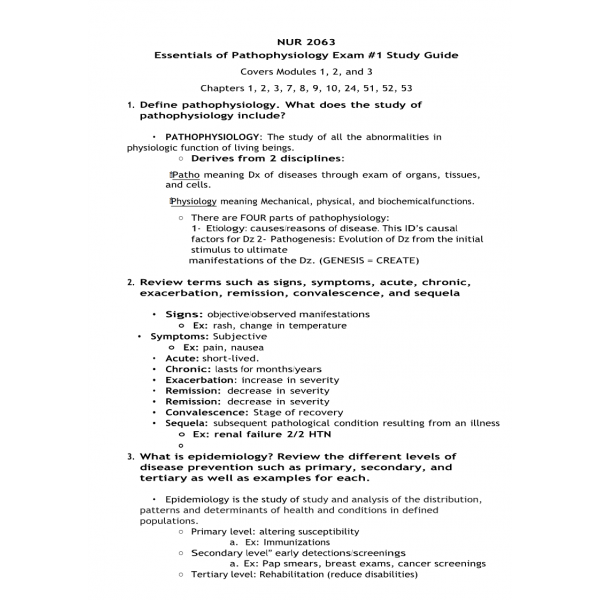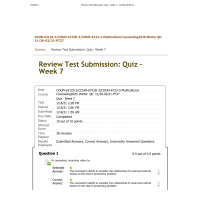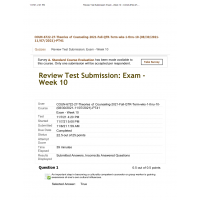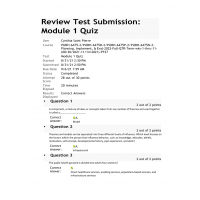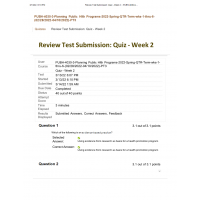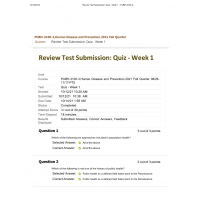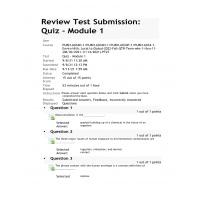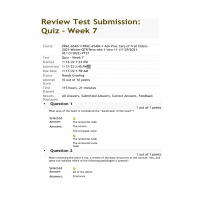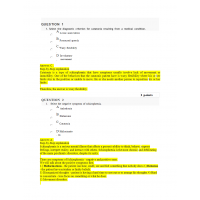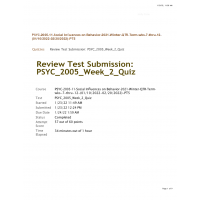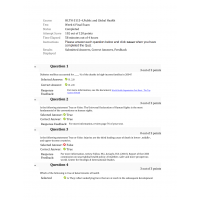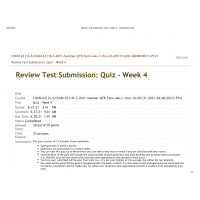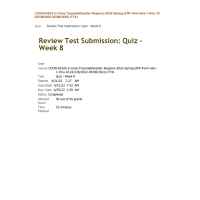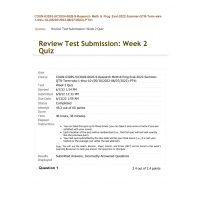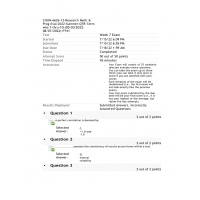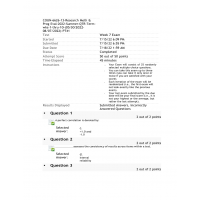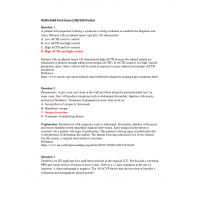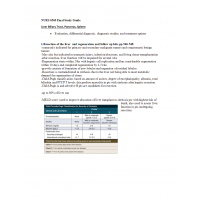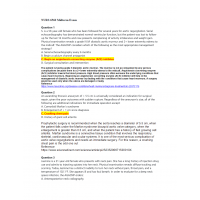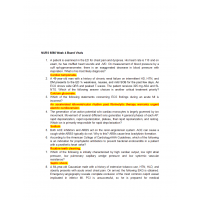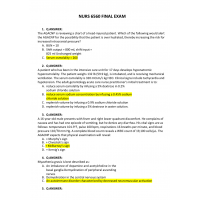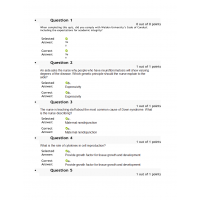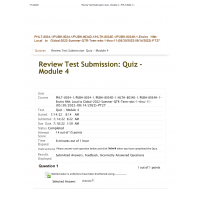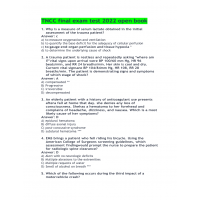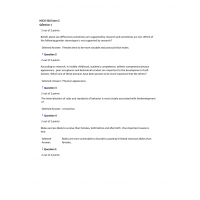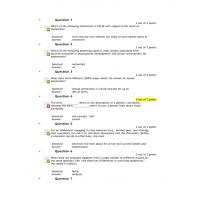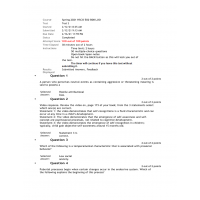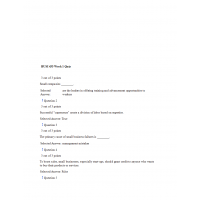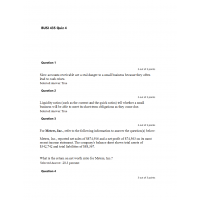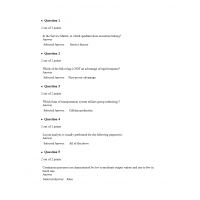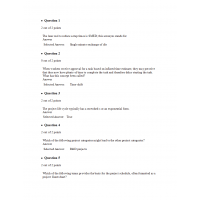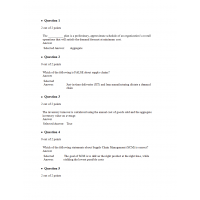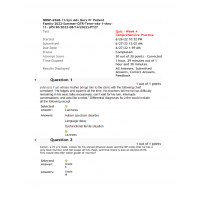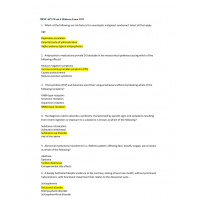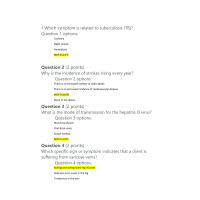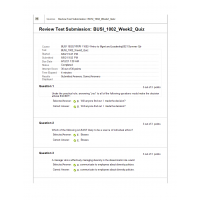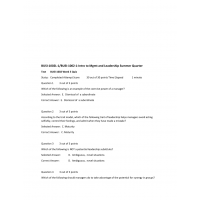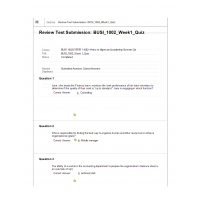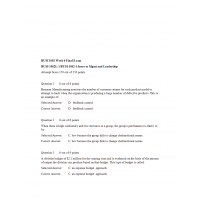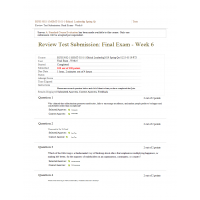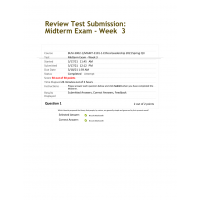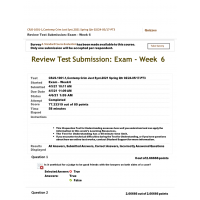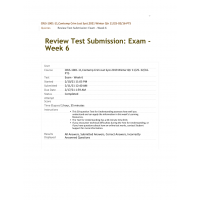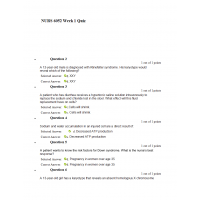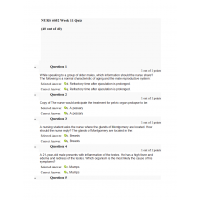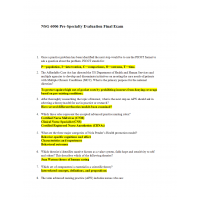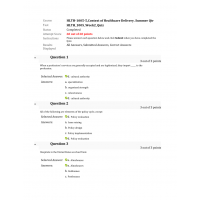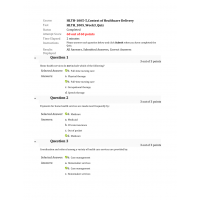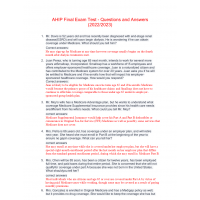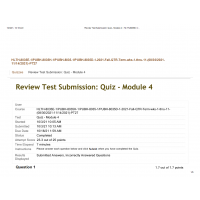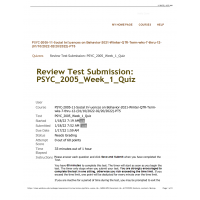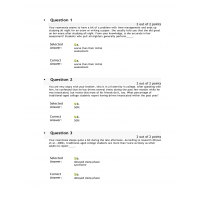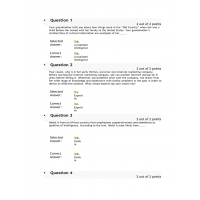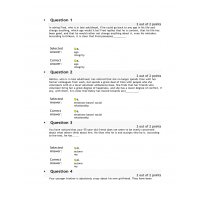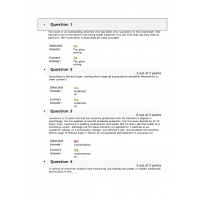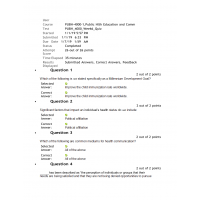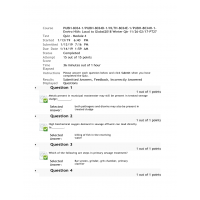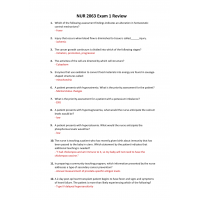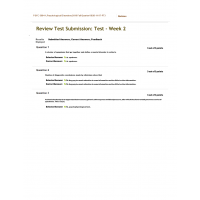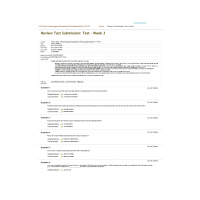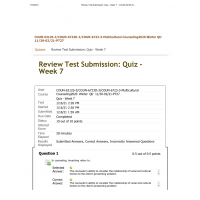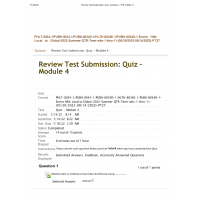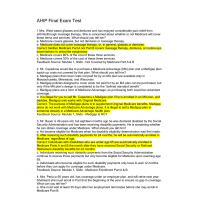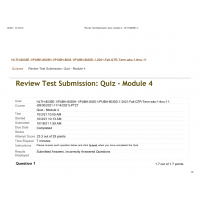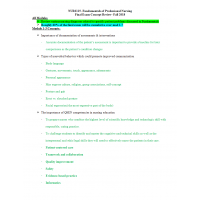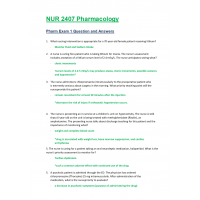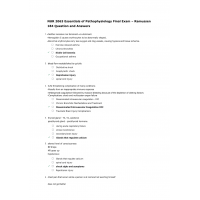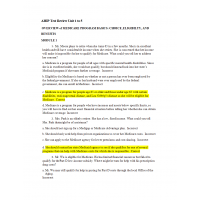NUR 2063 Essentials of Pathophysiology Exam #1 Study Guide
Covers Modules 1, 2, and 3
Chapters 1, 2, 3, 7, 8, 9, 10, 24, 51, 52, 53
1. Define pathophysiology. What does the study of pathophysiology include?
2. Review terms such as signs, symptoms, acute, chronic, exacerbation, remission, convalescence, and sequela
3. What is epidemiology? Review the different levels of disease prevention such as primary, secondary, and tertiary as well as examples for each.
4. Review the difference between homeostasis and allostasis.
5. Review the three different stages of the General Adaptation Syndrome (GAS) including the alarm stage, adaptation/resistance, and exhaustion stage. What hormones are released during the alarm stage and what effects do they have on the body?
6. Review the differences between the sympathetic vs the parasympathetic nervous systems. What happens to the body during “fight-or-flight” response?
7. Review the functions of the various organelles of the cell such as the nucleus, mitochondria, ribosome, lysosome, endoplasmic reticulum, peroxisome, golgi apparatus
8. Review the differences between extracellular fluid and intracellular fluid. Which electrolytes are found in high concentration outside the cell versus inside the cell?
9. Review how fluid is transported across the plasma membrane of the cell. What forces drive the movement of water across the membrane?
10. Review ways that fluids enter the human body (intake) versus ways fluid is excreted (output) out of the body.
11. Review conditions that result in ECF volume deficit (dehydration) versus ECF volume excess (hypotonic hydration). What are signs, symptoms, and causes for each?
12. What is edema? Review the various factors that can contribute to edema.
13. Why are electrolytes important?
14. What hormones play a role in regulating electrolyte levels?
15. What are electrolyte reservoirs? What electrolytes are found stored in bones?
16. What are the cardinal signs and symptoms of inflammation? What lab tests can detect inflammation in the body?
17. Review the role of histamines, prostaglandins, and leukotrienes. What effect do they have on the body during an immune response?
18. Review the differences between innate and adaptive immunity, which is specific? Which is nonspecific?
19. Review the following terms: virulence, invasion, exotoxin, endotoxin, and antimicrobial resistance. What factors contribute to antimicrobial resistance in microorganisms? How can we prevent the spread of microorganisms?
20. Review the difference between active and passive immunity, know examples for each type.
21. What is a hypersensitivity? Review the four different types of hypersensitivities: Type I (Anaphylactic), Type II (Cytotoxic), Type III (Immune complex), Type IV (Delayed cell-mediated). Know examples and mediating factors for each type.
22. Review the differences between benign and malignant tumors.
23. What are the three steps of carcinogenesis?
24. Review the effects of cancer on the body including terms: cachexia, anemia, leukopenia, and thrombocytopenia.
25. Review the various infections of the skin discussed in class including: warts, herpes simplex virus, herpes zoster, fungal infections, impetigo, and leprosy.
26. Review the various inflammatory conditions of the skin discussed in class including: lupus, psoriasis, atopic and contact dermatitis.
27. Review parasitic infections of the skin/hair including: lice, scabies, ticks, and bedbugs.
28. What are pressure ulcers? How are the staged and how can we prevent them?
29. What is compartment syndrome? Why does it occur and what are the signs? Remember the 5 P’s
30. Review diseases of the bone including: osteomyelitis, osteosarcoma, osteomalacia, and osteoporosis
31. Review disorders of the muscle including: myasthenia gravis, fibromyalgia, muscular dystrophy. Know causes and signs/symptoms for each.
32. Review disorders of the joints including: rheumatoid arthritis, osteoarthritis, psoriatic arthritis, and gout. Know causes and signs/symptoms for each.
| Institution & Term/Date | |
| Term/Date | Rasmussen College |
NUR 2063 Essentials of Pathophysiology - Exam 1 Review Sheet
- Product Code: 2022
- Availability: In Stock
-
$35.00
Related Products
COUN 6312S Week 7 Quiz
$14.99
PUBH-4030-3 Week 2
$9.99
NURS 6635 Final Exam 2021
$35.00
HLTH 3115 Final Exam
$25.00
NURS 6560 Final Exam 1
$40.00
NURS 6560 Midterm Exam
$30.00
HSCO 502 Exam 2
$25.00
BUSI 435 Week 1 Quiz
$9.99
BUSI 435 Week 4 Quiz
$9.99
BUSI 650 Quiz 1
$9.99
BUSI 650 Quiz 3
$9.99
BUSI 650 Quiz 4
$9.99
HLTH 1005 Week 2 Quiz
$9.99
HLTH 1005 Week 3 Quiz
$9.99
HLTH-8035E Module 4 Quiz
$9.99
AHIP Test 2 and 3
$29.99
PSYC-2005-11 Week 1 Quiz
$9.99
PSYC 2003 Week 2 Test
$9.99
PSYC 2003 Week 3 Test
$9.99
PSYC 2003 Week 4 Test
$9.99
PUBH-4000-1 Week 6 Quiz
$9.99
PSYC 3004 Week 2 Quiz
$9.99
PSYC 3004 Week 3 Quiz
$9.99
COUN 6312S Week 7 Quiz: 0
$12.00
AHIP Test Review Unit 1 to 5
$45.00

